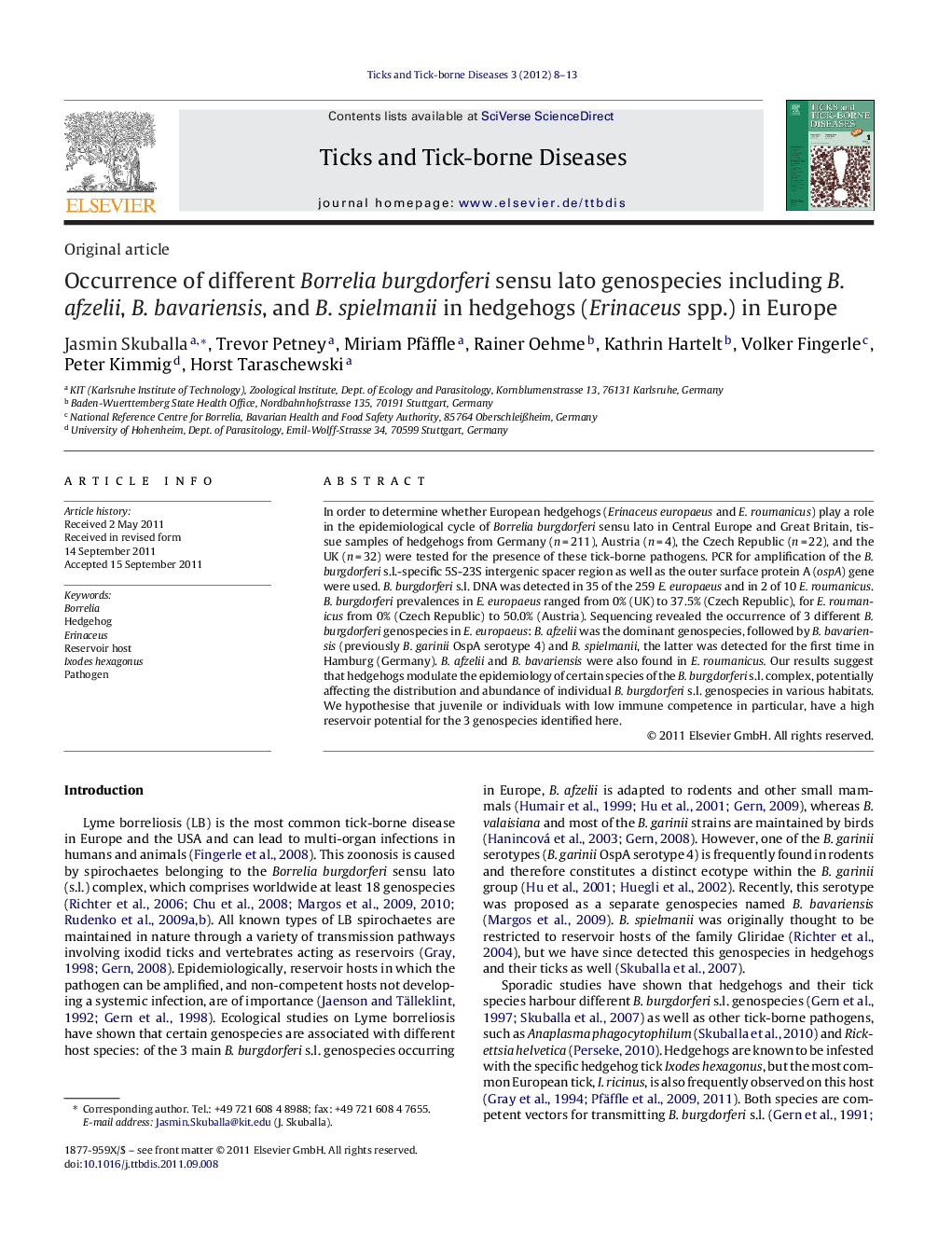| Article ID | Journal | Published Year | Pages | File Type |
|---|---|---|---|---|
| 2474278 | Ticks and Tick-borne Diseases | 2012 | 6 Pages |
In order to determine whether European hedgehogs (Erinaceus europaeus and E. roumanicus) play a role in the epidemiological cycle of Borrelia burgdorferi sensu lato in Central Europe and Great Britain, tissue samples of hedgehogs from Germany (n = 211), Austria (n = 4), the Czech Republic (n = 22), and the UK (n = 32) were tested for the presence of these tick-borne pathogens. PCR for amplification of the B. burgdorferi s.l.-specific 5S-23S intergenic spacer region as well as the outer surface protein A (ospA) gene were used. B. burgdorferi s.l. DNA was detected in 35 of the 259 E. europaeus and in 2 of 10 E. roumanicus. B. burgdorferi prevalences in E. europaeus ranged from 0% (UK) to 37.5% (Czech Republic), for E. roumanicus from 0% (Czech Republic) to 50.0% (Austria). Sequencing revealed the occurrence of 3 different B. burgdorferi genospecies in E. europaeus: B. afzelii was the dominant genospecies, followed by B. bavariensis (previously B. garinii OspA serotype 4) and B. spielmanii, the latter was detected for the first time in Hamburg (Germany). B. afzelii and B. bavariensis were also found in E. roumanicus. Our results suggest that hedgehogs modulate the epidemiology of certain species of the B. burgdorferi s.l. complex, potentially affecting the distribution and abundance of individual B. burgdorferi s.l. genospecies in various habitats. We hypothesise that juvenile or individuals with low immune competence in particular, have a high reservoir potential for the 3 genospecies identified here.
